Hydrodynamic characteristics of the double-winged otter board in the deep waters of the Mauritanian Sea*
SU Xin (宿鑫) , LU Huosheng (盧伙勝) , , FENG Bo (馮波) , ,CHEN Qiujie (陳秋杰) , YAN Yunrong (顏云榕) , ,
1 College of Fisheries, Guangdong Ocean University, Zhanjiang 524088, China
2 Center of South China Sea Fisheries Resources Monitoring and Assessment, Guangdong Ocean University, Zhanjiang 524088,China
3 Guangdong Provincial Engineering and Technology Research Center of Far Sea Fisheries Management and Fishing of South China Sea, Guangdong Ocean University, Zhanjiang 524088, China
Abstract In this paper, we tested the hydrodynamic characteristics of a new, double-winged otter board that consists of a forewing, a leading edge slat and a trailing edge flap. Flume experiments were conducted in a circulating flume tank by using a model with an aspect ratio (AR) of 0.85 and a horizontal planform area ( S) of 0.09 m 2. The results indicated that the critical angle ( α cr) of the model was 44°, whereas the maximum lift coefficient ( C Lmax) was up to 1.715, and the door efficiency ( K) was 1.122. The attack angle( α) ranged from 30° to 48° and from 10° to 46° when the lift coefficient ( C L) and door efficiency ( K) were greater than 1.2 and 1.0, respectively. To compare the difference between double-winged otter board and traditional Morgere Polyvalent Ovale, same model of Morgere Polyvalent Ovale was also tested under the same experimental conditions. The critical angle ( α cr) and maximum of lift coefficient ( C Lmax) of the doublewinged otter board were 37.5% and 14.6% larger than those of the Morgere Polyvalent Ovale. Therefore, we concluded that the novel, double-winged otter board was more suitable for bottom trawling fisheries in the deep water of the Mauretania Sea due to its better hydrodynamic characteristics and stability.
Keyword: Mauretania; deep waters; bottom trawl; double-winged otter board; flume experiment
1 INTRODUCTION
The Mauretania Sea is one of the most famous fishing grounds in the West Africa, where abundant phytoplankton and zooplankton have potentially been sustained by one of the upwelling systems in the northeastern Atlantic (Camphuysen and van der Meer,2005). Attracted by productive and high-quality catches in this fishing area, large numbers of fishing vessels from many countries such as Spain, Japan,Germany, France, etc. started fishing there in the 1950s, whereas Chinese fishing vessels, represented by China’s National Fisheries Company (CNFC),have fished there since the 1980s. Over the past 30 years, the fishery resources on the continental shelf, especially in shallow areas where the water depth is less than 100 m, signi ficantly decreased with increased numbers of fishing ships and the damage of environment under the sea (Meissa et al., 2013). A study by Zhang et al. (2011) indicated that the small pelagic fish and demersal fish in Mauretania still have a relatively large space for exploitation. However, it is almost impossible for Chinese fisheries to operate in waters deeper than 100 m due to the lower thrust of fishing vessels, greater drag force from fishing gear and, in particular, the poor stability and hydrodynamic characteristics of the traditional otter boards (Morgere Polyvalent Ovale). Therefore, it has become imperative to design a new otter board that has superior performance to reduce fuel usage and to explore new fishing grounds in deep water.

Fig.1 Overall design of the double-winged otter board in this study
Although the pair of otter boards is a small part of the trawl system, they play a vital role in expanding the mouth of the trawl net and keeping it on a special layer, particularly in minimizing benthic contact during fishing operations (Prat et al., 2008; Sala et al.,2009). Furthermore, improvements in the hydrodynamic efficiency of otter boards have been regarded as the most effective method to signi ficantly decrease fuel consumption (Jonsson et al., 2015) and the destruction of seabed (Broadhurst et al., 2015; Wu et al., 2015; Eigaard et al., 2016).
Traditionally, the hydrodynamic characteristics can be tested with physical experiments such as flume tank, wind tunnel and sea trails (Patterson and Watts,1986; Fukuda et al., 1999; Mellibovsky et al., 2015),which were considered to be time-intensive and costly(Yamasaki et al., 2007; Ivanovi? et al., 2011).Therefore, with the improvement of aerodynamics,some researchers have introduced numerical modelling with Computational Fluid Dynamics(CFD) into otter boards design (Jonsson et al., 2015;Leifsson et al., 2015). However, designing an otter board with CFD still needs experimental veri fication and is computationally expensive (Jonsson, 2013;Takahashi et al., 2015). In physical experiments,based on hydrodynamic characteristics, the fluidization around otter boards has been characterized(Park et al., 1993; Shen et al., 2015). Park et al.(1994a, b) conducted some experiments using hydrogen bubbles and nylon tufts to ensure thatfluidization around the otter board was visible during the flume tank experiment, which was widely used to analyze the relationship between fluidization and the hydrodynamic characteristics of otter boards.
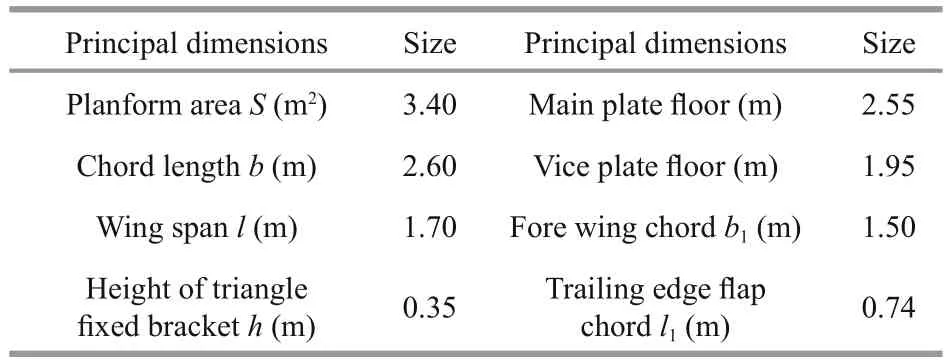
Table 1 The principal dimensions of a double-winged otter board
In this paper, we designed a new, full steelstructured otter board called a double-winged otter board, based on the works of Jonsson et al. (2015) and Fukuda et al. (1999). The hydrodynamic characteristics of a double-winged otter board were investigated in circulating flume tank, which helps in comparing the difference between traditional Morgere Polyvalent Ovale and novel double-winged otter board and provides some technical support to exploit new fishing ground in bottom trawling fisheries in the deep waters of the Mauretania Sea.
2 MATERIAL AND METHOD
Before starting to design a novel otter board, it is essential to choose a widely used one that is suitable for a targeted bottom trawling system as a template(Patterson and Watts, 1986). In this paper, we chose the traditional Morgere Polyvalent Ovale, a cambered oval otter board with one slot, as a template since it has been used for many years and was appropriately matched with the bottom trawl net and trawler.Consequently, the principal dimensions of a doublewinged otter board, including a planform area ( S) of 3.40 m2and a chord length ( b) and a wing span ( l) of 2.60 m and 1.70 m, respectively, were con firmed based on the same dimensions of Morgere Polyvalent Ovale. The theoretical height of the triangle fixed bracket ( h) was 0.35 m, which was con firmed by the catenary equation and empirical method of the angle of warp to water flow on a horizontal plane (Table 1).The structure of a double-winged otter board, which is presented in Fig.1, consists of three main cambered plates named the leading-edge slat, the fore wing and the trailing edge flap, along with some supporting plates, such as a main plate floor and guide plates.Moreover, the structure of the warp attachment was designed to be a combination of chain and bracket,which makes it convenient for adjusting the angle of attack during fishing operations by inserting or removing links on the restraining chain. Considering that the shape of an otter board can be easily distorted by the impact of weathered rock during fishing, which may completely transform its hydrodynamic characteristics, we also added a steel ring edge around the otter board to increase the strength (Fig.1).
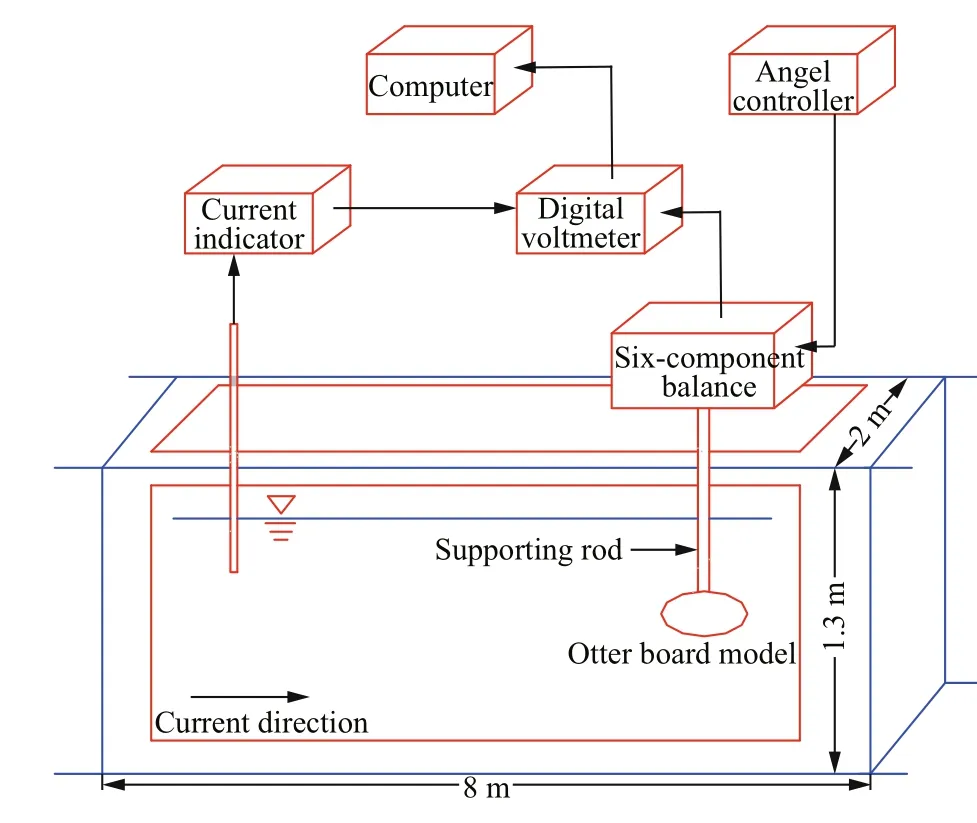
Fig.2 Schematic diagram of circulating flume tank for measuring the hydrodynamic characteristics of the models
The flume experiments were conducted on two models, which are scaled versions of the full-size double-winged otter board and Morgere Polyvalent Ovale, with the same principal dimensions of an aspect ratio (AR) 0.85, a planform area ( S) 0.09 m2,chord length ( b) 0.40 m and wing span ( l) 0.28 m. The models were manufactured with 2.0 mm thick stainless steel and a stainless-steel rod of 8.0 mm. The characteristics of the model were measured in a circulating flume tank at the School of Naval Architecture and Ocean Engineering, the Harbin Institute of Technology, Weihai. During the experiment, the models were in the middle of the observation section by being fixed on a special steel rod that connected with a six-component balance(Fig.2). All of the hydrodynamic parameters, such as lift force ( L) and drag force ( D), were measured by this six-component balance (composed of a sensor, a unit of signal ampli fier and data acquisition, a 20Nm torque measurement, and a 200N maximum load).The flow velocity ( V) was controlled by a speed control system based on LabVIEW software, whereas the value of the angle of attack can be regulated by the rotation of the steel rod. All of the data, including the flow velocity ( V) and the hydrodynamic parameters,were collected with a frequency of 200 per 20 s and were analyzed with the average value. The temperature of the flume water was 20°C during the experiment.
Based on the real towing speed of the full-sized otter board, the flow velocity ( V) of the flume experiment was set from 0.4–0.8 m/s with an increment of 0.1 m/s, while the value of the attack angle ( α) was from 10° to 60° with increments of 2°,6° and 10°. Furthermore, the fluorescence lines with a diameter of 0.5 mm were attached on the upper surface and tail of the model to observe the flow conditions around the model at different values of attack angles with the flow velocity of 0.8m/s.
Each dataset analyzed for the interference correction of the stainless-steel rod, and all of the outliers were rejected by using the Pauta criterion method. The lift coefficient ( CL), drag coefficient( CD), door efficiency ( K) and Reynolds number ( Re)can be calculated as follows:
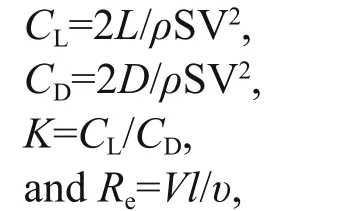
where ρ=1.0×103kg/m3is the density of water,S=0.09 m2is the planform area, υ=1.0×10-6m2/s is the dynamic viscosity at 20°C, Reis the Reynolds number,and L, D V, S and l are the lift force, drag force, flow velocity, planform area and characteristic length of the double-winged otter board, respectively.
3 RESULT
Based on the results of flume tank, the relationship between Reynolds number ( Re) and lift coefficient( CL) and drag coefficient ( CD) of the double-winged otter board with an aspect ratio (AR) of 0.85 are presented in Fig.3. The variation of each hydrodynamic coefficient was not signi ficant with increased Reynolds number ( Re) from 1.60 to 3.20, which means that the hydrodynamic coefficient almost maintained a constant value in the experiment flow velocity range. All of the coefficients used for analyzing the model performances in the paper were the average value at each attack angle ( α).
3.1 The hydrodynamic characteristics of the double-winged otter board
With increments of attack angle ( α) from 10° to 60°, the trends in the lift coefficient ( CL), drag coefficient ( CD) and door efficiency ( K) are presented in Fig.4. The value of CLincreased from a minimum of 0.397 ( α=10°) to a maximum of 1.715 ( α=44°), and decreased signi ficantly when the attack angle ( α) was bigger than 44°, this angle was de fined as the critical angle ( αcr) of the double-winged otter board; the same trend occurred on the curve of K, where the maximum was 1.786 at attack angle ( α) of 20°. Meanwhile, the peak of CDpresented at the attack angle ( α) of 48° was 1.646, where the value of CDstarts to increase again after a distinct decrease followed with the rise of attack angle.
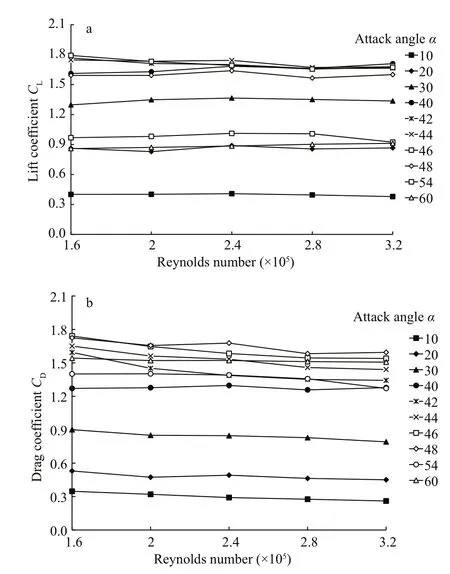
Fig.3 The relationship between the lift coefficient ( C L), drag coefficient ( C D) and Reynolds number ( R e) of the double-winged model at each angle of attack
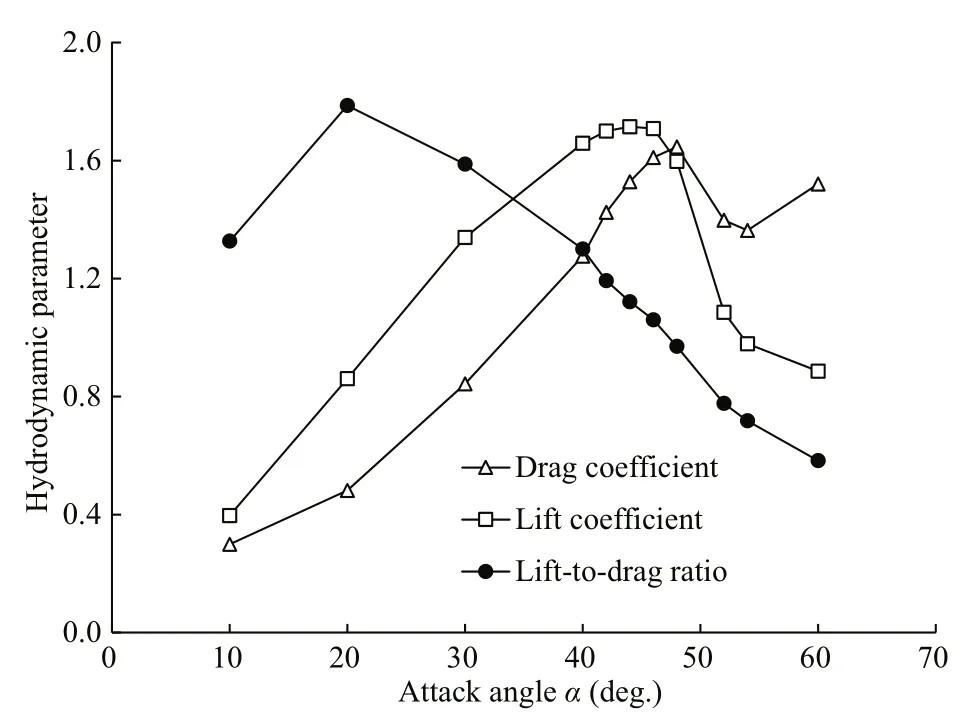
Fig.4 Hydrodynamic parameters of the double-winged otter board at different attack angles
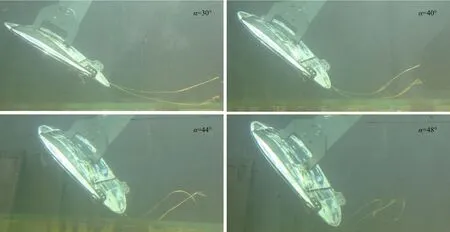
Fig.5 Upper surface and tail flow visualizations using the fluorescence line of the double-winged otter board at a flow velocity ( V) of 0.8 m/s, α is the attack angle
Generally, the hydrodynamic characteristics of otter boards are closely related to the surrounding flow state during fishing operations; therefore, we observed the variation of flow state ( V=0.8 m/s)around the double-winged model by using attachments of fluorescent lines with the development of the attack angle ( α) (Fig.5). The fluorescence lines had a smooth arrangement on the upper surface and tail of the model at an attack angle ( α) of less than 40°, and a faint roll up was observed at the end of the fluorescent lines attached to the tail, indicating that the flow pattern surrounding the model was a stable laminar pattern and that there was no fluid separation. With a continuing increase in the attack angle ( α) to 44°, the fluorescent lines attached to the upper surface presented a slight crimp, whereas the caudal parts were signi ficantly curved into an “S”, this suggests that the attack angle reached the critical value,followed by a remarkable vortex and large area of fluid separation on the back-end of the model.Furthermore, the turbulent flow covered the entire upper surface when the attack angle over the critical value, with massive and irregular curves of fluorescence lines.
4 DISCUSSION
4.1 The hydrodynamic characteristics of a doublewing otter board
From the results of the flume experiment, we concluded that the maximum of lift coefficient ( CLmax)of novel double-winged otter board was up to 1.715 at a critical angle ( αcr) of 44°. The peak of door efficiency( K) was 1.786 at an attack angle ( α) of 20°. The attack angles were ranged from 30° to 48° and 10° to 16°,corresponded with the values of lift coefficient ( CL)and door efficiency ( K) was bigger than 1.2 and 1.0,respectively.
To compare the difference in hydrodynamic characteristics with the double-winged model, the model of traditional Morgere Polyvalent Ovale otter board was also tested under the same experimental conditions except some small adjustments of the attack angle ( α). According to the results, we found that the maximum of lift coefficient ( CLmax) and critical angle ( αcr) of double-winged otter board respectively increased 14.6% and 37.5%, compared with the Morgere Polyvalent Ovale otter board ( CLmax=1.559,αcr=32°), whereas the drag coefficient was similar between the two otter boards (Fig.6). In this research,although the lift coefficient ( CL) and door efficiency( K) of Morgere Polyvalent Ovale was slightly higher at the smaller attack angle (10°≤ α ≤30°), the doublewinged otter board was clearly superior for its higher maximum of lift coefficient ( CLmax) and wider corresponding attack angles. All of these hydrodynamic characteristics indicate that it is feasible to apply this otter board in deep-water fishing.
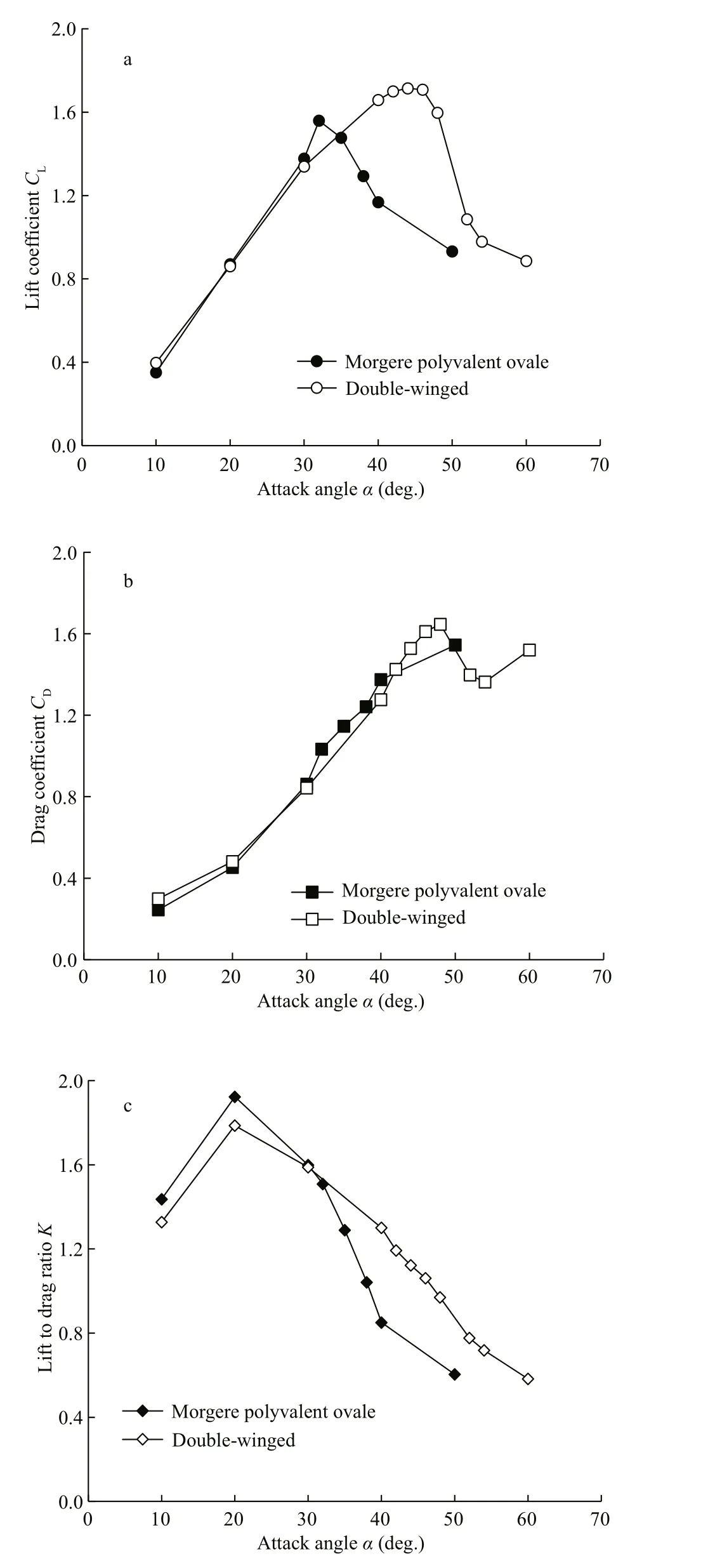
Fig.6 A comparison of drag coefficient C D, lift coefficient C L and door efficiency K between the double-winged otter board and Morgere Polyvalent Ovale
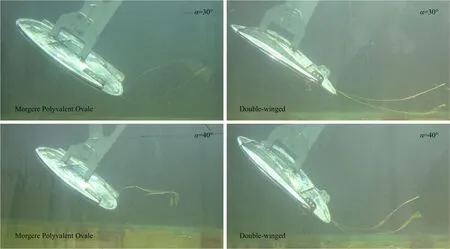
Fig.7 Upper surface and tail flow visualizations of models at a flow velocity of 0.8 m/s

Table 2 The hydrodynamic parameters of otter boards with a low aspect ratio at the critical angle of attack (Sea fish et al., 1993)
The external structure of otter board has direct effect on its surrounding fluid state which is the key factor in hydrodynamic performance (Matuda et al.,1990). According to the results of these fluidization experiments, we concluded that the reason for superior hydrodynamic performance of doublewinged otter board was its unique construction. For the double-winged otter board, the fore wing and trailing edge flap were designed to be cambered plates with an airfoil shape, which was essential to increasing the values of critical angle ( αcr) and lift coefficient( CL) by avoiding an earlier fluid separation caused by a low camber ratio at a small angle of attack (Shen et al., 2015). Furthermore, the structures of the leading edge slat and trailing edge flap will contribute to the reduction of the differential pressure between the upper and under surfaces by accelerating the flow velocity on the upper surface of the fore wing; they also help to alleviate the fluid separation on the upper surface of the double-winged otter board(Hermannsson, 2014). Moreover, the effects of the three cambered plates on the hydrodynamic performance of double-winged otter board were obviously presented in Fig.7, compared with the Morgere Polyvalent Ovale otter board. The large area of fluid separation was generated on the upper surface of Morgere Polyvalent Ovale model at a smaller attack angle ( α) of 30°, in which the fluorescence lines signi ficantly rolled up and arranged irregularly.In contrast, even at a greater attack angle of 40°, there was still laminar flow surrounding the double-winged model, which was indicated by a slight roll up and an orderly arrangement of the fluorescent lines.
4.2 A comparison of the hydrodynamic characteristics between the double-winged and commonly used otter boards with low aspect ratio
There are several otter boards with low aspect ratio, such as the flat wooden, reference Vee,Hinriksson Poly-Ice, etc. (Sea fish et al., 1993), which are being widely used in bottom fisheries all over the world. The hydrodynamic performance of these otter boards has been recently researched (Table 2).Although other otter boards have greater door efficiency ( K) values at the critical angle ( αcr), the critical angle and especially, the maximum lift coefficient ( CLmax) were signi ficantly lower than those of double-winged otter board. Considering those characteristics we concluded that the double-winged otter board had superior hydrodynamic performance with a low aspect ratio (AR).
5 CONCLUSION
It is essential to equip a pair of superior otter boards for exploiting the new deep-water fishing ground. In this paper, some efforts have been made to test the hydrodynamic characteristics of a novel doublewinged otter board. The double-winged otter board was designed base on the works of former researchers and local fisheries investigation in the Mauretania Sea, while the Morgere Polyvalent Ovale, a cambered oval otter board with one slot, was widely used in the Chinese bottom fisheries in West Africa. The hydrodynamic performance of double-winged otter board had been tested, and also the comparison between traditional Morgere Polyvalent Ovale and double-winged otter board had been conducted on each model in a circulating flume tank. The results shown that the maximum of lift coefficient and critical angle of double-winged otter board respectively increased 14.6% and 37.5% compared with those of Morgere Polyvalent Ovale. This difference we ascribe to the external structure of each otter board.
As described above, we conclude that the novel double-winged otter board has the greatest force of horizontal expansion, a higher range of effective attack angle and stability in deep-water, and appropriately matches with fishing vessels; this superior hydrodynamic performance proves that it is feasible to use the novel double-winged otter board in bottom trawling fisheries in Mauritania. In the future,there are still some improvements such as reducing the fuel consumption or seabed destruction without decreasing the lift force needs to conduct further researches.
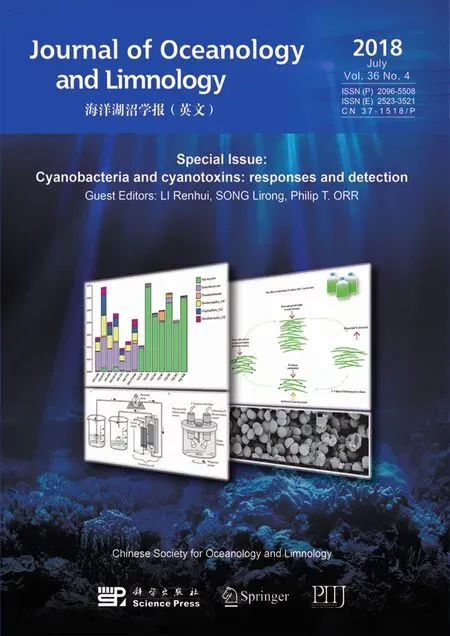 Journal of Oceanology and Limnology2018年4期
Journal of Oceanology and Limnology2018年4期
- Journal of Oceanology and Limnology的其它文章
- Editorial Statement
- Effects of seawater acidi fication on the early development of sea urchin Glyptocidaris crenularis*
- Dietary effects of A zolla pinnata combined with exogenous digestive enzyme (Digestin?) on growth and nutrients utilization of freshwater prawn, Macrobrachium rosenbergii(de Man 1879)
- Preliminarily study on the maximum handling size, prey size and species selectivity of growth hormone transgenic and non-transgenic common carp Cyprinus carpio when foraging on gastropods*
- De novo transcriptome sequencing reveals candidate genes involved in orange shell coloration of bay scallop Argopecten irradians*
- New record of Japanese snake blenny Xiphasia matsubarai(Perciformes: Blenniidae) from South China Sea*
